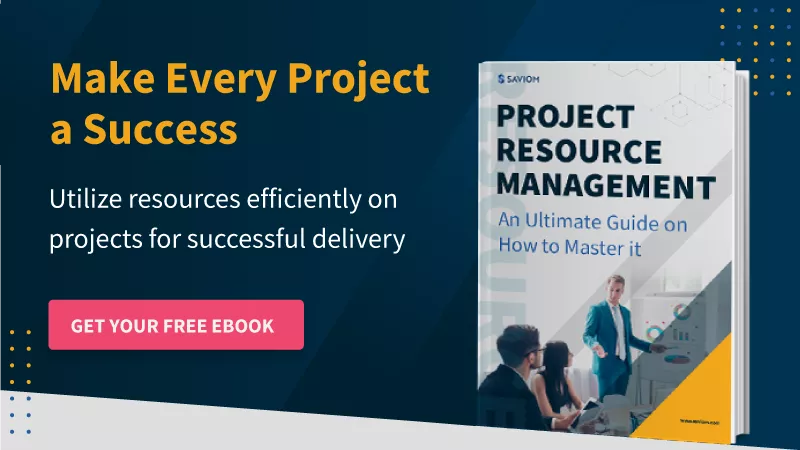“Writing a proposal is an art and a science.” – Rick Harris, the Executive Director of The Association of Proposal Management Professionals (APMP).
For any project or initiative to move forward, one must submit a proposal to the organization, clients, or stakeholders. A compelling project proposal helps you to gather approval and secure the necessary funding.
The project proposal outlines what you aim for, how you plan to achieve it, and why it matters. But creating one isn’t just about listing objectives and action plans—it’s about persuading your audience. You must address their concerns, demonstrate the project’s feasibility, and showcase its alignment with organizational goals and needs.
This blog will explain seven steps to writing an effective project proposal that will help you earn stakeholders’ trust and secure financial support.
But before that, let’s understand the basics:
What is a Project Proposal?
A project proposal is a formal document or framework that outlines the critical attributes such as the objectives, scope, approach, budget, outcomes, resources required, and timeline needed to drive the project to success.
A company shares the project proposal document with a client or stakeholder before the project’s start date. The stakeholders judge the feasibility and return on investment of the project before buying into the services. Organizations can only win the buy-in when their proposal addresses every problem or expectation of the client and highlights the ROI, value-addition, etc. Therefore, it is essential to formulate a detailed, well-defined, and irrefutable proposal.
Key Components of a Project Proposal
The following are some of the components that make your project proposal comprehensive:
- Executive Summary: This provides a quick overview of the entire project, summarizing its main purpose and anticipated outcomes for stakeholders.
- Objectives & Goals: It clearly explains the specific and measurable targets the project aims to achieve to address a particular problem or improve processes.
- Scope of Work: SOW highlights the project’s boundaries and defines the tasks, deliverables, and activities to specify what will be covered.
- Project Approach: This elaborates on the strategy or methodologies and describes how the project will be executed to meet its objectives.
- Project Timeline: It provides a chronological list of tasks or activities to be performed and project milestones to be achieved to keep a project on track.
- Project Budget: The budget offers a cost breakdown of all expenditures, including resources, labor, equipment, materials, and facility.
- Project Resources: It includes details about the resources, tools, and equipment required for the successful execution of the project.
- Risk Assessment: This outlines the potential risks that could impact the project and specifies mitigation strategies.
- Expected Benefits & Outcomes: It showcases the importance of the project and enumerates the anticipated result.
Now that we have learned about the various components, let’s understand the different types of project proposal formats.
Types of Project Proposals
There are several types of project proposals, each serving a specific purpose depending on the project’s nature and its intended audience. Understanding these types can help you tailor your proposal to achieve the desired outcomes. Here’s an overview:
Solicited Project Proposals
These project proposals are sent in response to a Request for Proposal (RFP). In this case, the clients formalize the process and invite tenders from interested vendors. The proposal outline is mentioned beforehand, and businesses must stick to the guidelines mentioned in the RFP.
Unsolicited Project Proposals
This type of project proposal format is used when there is no RFP or any sort of communication between the two parties. In this case, the proposal needs to be extra convincing because you are introducing new ideas or solutions without a formal request.
Continuation Project Proposals
These proposals are sent to stakeholders to update them on the status of the projects. It also re-affirms that the clients are still on board with the budget, timeline, and project management methodologies. Therefore, it can be considered as a follow-up proposal.
Read More: What are the Different Project Management Methodologies?
Renewal Project Proposal
Renewal project proposals can be used to reach out to stakeholders who have previously worked with you. It serves as a reminder of previous achievements and shows that you can help complete yet another successful project.
Informal Project Proposals
As the name suggests, informal project proposals do not follow any proper structure. They are used for preliminary discussions or smaller projects and typically outline projects’ basic ideas and benefits. These are often communicated through emails or calls.
Supplemental Project Proposal
While executing the project, there can be instances when the resources or the allocated funds are exhausted before the project is complete. In such a scenario, a supplemental proposal is sent to request additional resources or funding to complete things.
Read More: 5 Ways to Reduce Project Management Costs
Now that we know the types of business proposals, let’s understand their significance.
What is the Importance of a Project Proposal?
There can be multiple benefits of a project proposal, both for the stakeholders and contractors presenting the document. When decision-makers receive multiple business proposals from varying competitors, they can make objectively better decisions by doing a thorough comparative analysis of different vendors.
For instance, stakeholders can gain insights into each vendor’s value proposition by evaluating different problem-solving approaches and pricing models. The varying prices can also help them determine which aspects create a difference in value. Then, they can make an informed decision accordingly.
A well-defined project proposal also helps stakeholders gauge the project’s viability, resources required, and expected outcomes. It establishes a clear roadmap, aligns all parties, and reduces ambiguity. For contractors, sending out multiple project proposals and delivering successful projects helps them build a strong industry reputation.
Finally, a well-researched proposal that outlines all the key steps, tools, personnel, and other requirements upfront fosters accountability for the vendors. This also ensures that all aspects are addressed before the project begins.
Read More: 10 Must-have Project Management Skills for Successful Professionals
Next, we’ll explore the difference between project proposals, project charters, and business cases.
Project Proposals vs. Project Charters vs. Business Cases: What’s the Difference?
Here are the key differentiators between project proposals, project charters, and business cases-
| Aspect | Project Proposal | Project Charter | Business Case |
|---|---|---|---|
| Purpose | It presents a comprehensive plan to secure funding or approval from stakeholders | It outlines the project scope, objectives, and responsibilities of people participating in the project | It explains how the benefits of the project supersede its cost and justify its necessity. |
| People Involved | Stakeholders, clients, or investors | Project manager, project sponsor, stakeholder, project team, and subject matter experts | Investors, decision-makers, and senior management |
| Timing | Documented before project approval to propose new ideas. | Created after the approval of the project proposal to initiate the work. | Crafted during the planning stage to determine the project’s viability. |
| Key Components | Project’s objectives, scope, approach timeline, budget, resources, risk assessment & benefits | Project’s purpose, scope, objectives, and key responsibilities | The project’s cost-benefit analysis, the risk involved, and the ROI |
| Length | Detailed and lengthy | Short and concise, usually 1-2 pages. | Detailed, focused on cost analysis and justification. |
| Goal | Its goal is to seek approval from stakeholders | It is meant to authorize the project officially | Its main aim is to provide evidence for decision-making |
Read More: Project Initiation Checklist: Why is it Important for Successful Delivery?
In the following section, you’ll learn how to write a project proposal.
How to Write a Project Proposal?
As mentioned earlier, writing the correct proposal is significant since it helps stakeholders be on board with their decisions. Here are a few steps to guide you in writing a project proposal.
Understand the Project Background & Write an Executive Summary
The project background is an integral part of the proposal. Thus, before framing a project proposal, managers or the concerned party must thoroughly research similar projects and gather relevant data to understand the project background better. Moreover, it is critical to understand what the client or stakeholder is looking for and frame the proposal accordingly.
Furthermore, proposers can study current industry trends and practices and provide relatable examples of previous successful projects to set a good example. Based on this analysis, managers can create an executive summary that concisely highlights the circumstances that led to the proposal, the core purpose of the project, and the expected outcomes and benefits.
Define the Scope & Objective of the Project
After the executive summary is prepared, you must outline the project scope, which details the project’s deliverables, inclusions, exclusions, constraints, and dependencies. It provides stakeholders with a clear understanding of the project’s extent and prevents scope creep.
Moreover, the scope serves as a reference point throughout the project cycle, ensuring that the team adheres to the original plan. When the stakeholders understand what the project will achieve and how it will help them, there is a greater chance of acceptance. Hence, the goals should be clear, achievable, timebound and answer the following questions:
- Why are you proposing this project?
- What approach will you take to achieve success?
- Where will you implement it?
- Who will be the primary beneficiary?
- What problems is the project addressing?
Read More: What is a Project Scope Document, and How to Create an Effective One?
Outline the Project Approach
Once the goals are defined, the next step is to state all the details about the project, beginning with underlining the approach. This includes detailing the key steps involved, the project management methodologies (Agile or Waterfall) you will implement, and the tools that will be required.
Here, you can also highlight metrics like quality standards and the schedule based on which the project’s success will be judged. Presenting the solutions step-by-step helps the stakeholders comprehend it easily. Moreover, a well-thought-out approach builds stakeholders’ confidence in the project.
Identify Project Resource Requirements
In the following step, you can list the personnel, tools, technology, and materials needed to complete the project. This step helps stakeholders understand the specialized skills and new software or machinery required in advance and take necessary action to ensure timely procurement.
You can also provide an overview of the resource allocation plan, mentioning how you will distribute the necessary resources throughout the project lifecycle. For example, if the project involves constructing a sustainable airport and requires three senior architects, specify their responsibilities and how they will collaborate to design different sections.
Read More: What is Project Resource Management, and How to Master it?
Estimate the Budget and Timeline
Timeline and budget are the most crucial project constraints. Thus, providing an accurate number is essential to win over the clients. The budget estimates clarify the overall costs associated with materials, labor, facility, overhead, and other project-related expenses.
Similarly, the timeline elucidates project phases, key milestones, and deadlines. A detailed budget and timeline section will prove that you have researched the project comprehensively. It also ensures that you use the stakeholder’s resources only for what’s necessary, reinforcing the client’s faith in your project.
Develop a Risk Management Plan
No project is risk-free. Thus, managers must consider potential risks and formulate a mitigation plan to prevent bottlenecks. The risks must include external factors like market changes and internal challenges such as unplanned attrition of crucial resources or technical breakdown.
You can mention the impact and severity of each risk and use risk assessment methodologies such as risk matrix to calculate their probability. After mentioning potential threats, you can present a risk management plan demonstrating your preparedness and commitment to deliver results despite unforeseen challenges.
Read More: How to Mitigate Resource Risk in Project Management?
Highlight the Value Proposition
The last step of the process is to explain the project’s benefits and how it addresses the specific needs or challenges of the business. This section should highlight the potential return on investments the stakeholders will get once the project is completed.
To secure stakeholder buy-in, your proposal must show that your project delivers substantial value compared to competitors. The key is to stand out by emphasizing the project’s contribution to organizational efficiency, growth, or innovation.
These are some ways to keep in mind while creating a project proposal. Let’s get a clear understanding of the project proposal with an example:
Project Proposal Example
Here is an example to help you understand how a project proposal would work in the real world. Let’s consider a banking organization planning to enhance user experience, boost customer retention, and simplify financial services by developing a mobile banking application.
The bank has the necessary funds to invest but lacks technical expertise. Hence, it issues a Request for Proposal (RFP) document and sends it to the top app development companies in the city.
Then, the companies interested in building mobile banking apps will prepare a sample project proposal for the bank. Here is the overview of key elements they should include in their proposal:
- Executive Summary: In this section, highlights of the app’s purpose, market needs, challenges it will solve, and expected benefits will be provided.
- Project Scope & Objectives: This will include developing core features such as account management, fund transfers, bill payments, personalized dashboards, and alerts.
- Approach: This section will talk about project methodology (agile project management methodology with biweekly sprints), phases (requirement gathering, designing, prototyping, development, internal, deployment), and technologies (React Native, Node.js, AWS)
- Resource Requirements: Here, the resources required, such as personnel (5 Developers, 3 Designers, 1 Project Manager, 2 QA testers), Software Licenses, and Development tools, will be discussed.
- Budget & Timeline: This section will outline the total cost ($200,000) and total duration (6 Months)
- Risk Management Plan: In this section, potential risks (data breaches, integration issues) and their mitigation strategies (implement cybersecurity measures, dedicated integration testing phase) will be elaborated.
- Value Proposition: This section will cover the project’s benefits, such as increased digital adoption rates, enhanced customer satisfaction, improved competitive edge, and higher revenue.
Read More: How to Create an Effective Project Plan in 9 Simple Steps?
Now that we have learned the fundamentals, let’s dive into some additional tips that can help you improve your project proposals.
Conclusion: Additional Tips
An effective project proposal secures stakeholders’ buy-in and sets the stage for successful project completion. If you adhere to the above-mentioned steps while framing a project proposal, there’s a very high chance you will win the attention of the clients or upper management.
Here are some helpful tips to help you better frame the proposal.
- Understand the client’s requirements before crafting a proposal.
- Define realistic deadlines and do accurate resource estimation.
- Keep the language simple and avoid using too much jargon.
- Use statistics and case studies to underline your point.
- Include visual data – graphs and charts, but don’t overdo it.
- Maintain consistency in the format across the document.
- Proofread the proposal before submission.
- Use the right terminologies.
- Do not take too much time to frame the proposal.
- Showcase your industry experience and past successes.
The Glossary
Read More: Glossary of Resource Workforce Planning, Scheduling and Management












